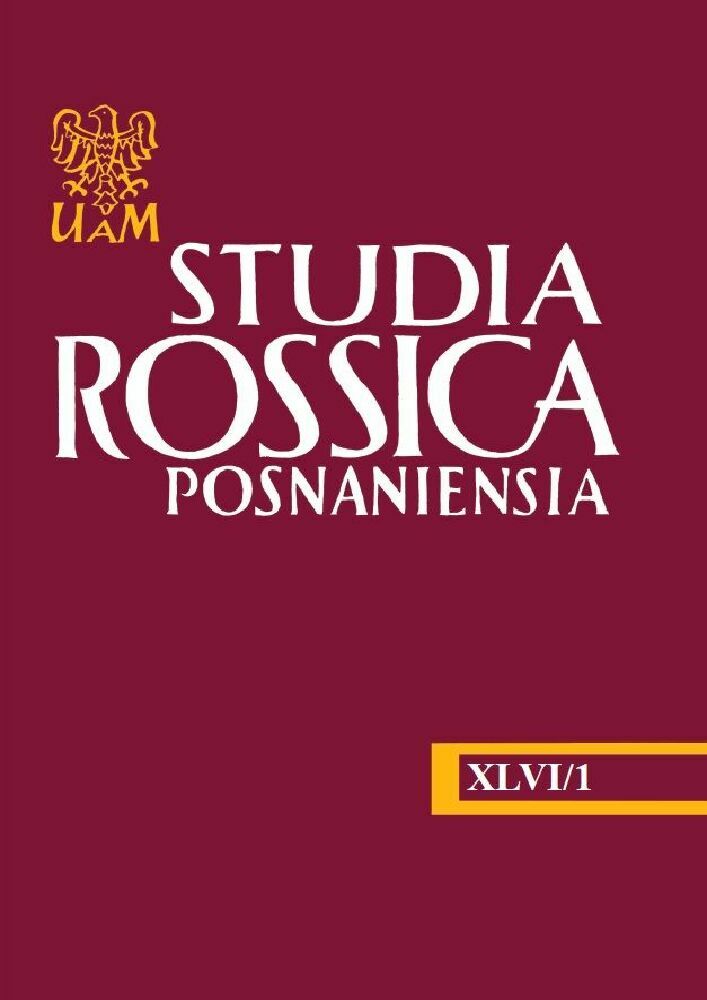Abstract
Bearing in mind the prime principle of audiovisual integration in human communication (Seeber 2012, 2017), the author discusses the empirical aspects of the correlation between nonverbal communication and simultaneous interpreting. Having established that kinesics and prosody indeed can have a positive impact on understanding one’s message, he conducts an experiment in which he compares the quality of the interpretations performed by MA students of English and Russian philology divided into audio and audio-visual groups in the case of English-Polish and Russian-Polish simultaneous interpreting. He focuses specifically on two categories of gestures – illustrators and emblems. Ultimately, he discovers a tangible relation between having the ability to see the speaker and the accuracy of interpreting the speaker’s speech. However, the limitations of the experiment do not allow for making universal conclusions on the basis of its results, as it should become operationalised and replicated.
References
Anderson, Linda. „Simultaneous interpretation: Contextual and translation aspects”. Bridging the gap: Empirical research in simultaneous interpretation. Red. Sylvie Lambert, Barbara Moser-Mercer. Amsterdam, John Benjamins Publishing Company, 1994, s. 101–120.
Balzani, Maurizio. „Le contact visuel en interpretation simultanée: resultats d’une expérience (Français–Italien)”. Aspects of applied and experimental research on conference interpretation. Red. Laura Gran, Christopher Taylor. Udine, Campanotte Editore, 1990, s. 93–100.
Bartłomiejczyk, Magdalena. „Effects of short intensive practice on interpreter trainees’ performance”. Why translation studies matters. Red. Daniel Gile, Gyde Hansen, Nile K. Pokorn. Amsterdam, John Benjamins Publishing Company, 2010, s. 183–194.
Bühler, Hildegund. „Conference interpreting: A multichannel communication phenomenon”. Meta: Translators’ Journal, 30 (1), 1985, s. 49–54.
Burgoon, Judee K., Aaron Bacue. „Nonverbal communication skills”. The handbook of communication and social interaction skills. Red. John O. Greene, Brant R. Burleson. Mahwah, Lawrence Erlbaum Associates Publishers, 2003, s. 179–219.
Ekman, Paul. „Emotional and conversational nonverbal signals”. Language, knowledge, and representation. Red. Jesús M. Larrazabal, Luis A. Perez Miranda. Dordrecht, Springer Science+Business Media, 2004, s. 39–50.
Ekman, Paul, Wallace V. Friesen. „The repertoire of nonverbal behavior: Categories, origins, usage, and coding”. Semiotica, 1 (1), 1969, s. 49–98.
Fujishin, Randy. „Creating effective groups: The art of small group communication”. Plymouth, Rowman & Littlefield Publishers, 2007.
Galvão, Elena Z. „Speech and gesture in the booth – A descriptive approach to multimodality in simultaneous interpreting”. Translation and the (Trans)formation of Identities. Selected Papers of the CETRA Research Seminar in Translation Studies 2008. Red. Dries De Crom. 2009. Web. 14.11.2020. http://www.arts.kuleuven.be/cetra/papers/files/galvao.pdf.
Grabowski, Joachim. „The writing superiority effect in the verbal recall of knowledge: Sources and determinants”. Writing and cognition. Red. Mark Torrance, Luuk van Waes, David Galbraith. Bingley, Brill, 2007, s. 163–179.
Jesse Alexandra et al. „The processing of information from multiple sources in simultaneous interpreting”. Interpreting, 5 (2), 2000/2001, s. 95–115.
Moser-Mercer, Barbara. „Remote interpreting: Issues of multi-sensory integration in a multilingual task”. Meta: Translators’ Journal, 50 (2), 2005, s. 727–738.
Mouzorakis, Panayotis. „That feeling of being there: Vision and presence in remote interpreting”. Web. 14.11.2020. https://www.academia.edu/25852376/That_feeling_of_being_there_Vision_and_presence_in_remote_interpreting.
Osika, Grażyna. „Komunikacja niewerbalna”. Zeszyty Naukowe Politechniki Śląskiej. Seria: Organizacja i Zarządzanie, 43, 2008, s. 111–128.
Rachut, Konrad. „Komunikacja niewerbalna a tłumaczenie symultaniczne: Aspekt teoretyczny”. Acta Neophilologica, 21 (2), 2019, s. 65–75.
Rennert, Sylvi. „Visual input in simultaneous interpreting”. Meta: Translators’ Journal, 53 (1), 2008, s. 204–217.
Seeber, Kilian G. „Multimodal input in simultaneous interpreting: An eye-tracking experiment”. Translation Studies: Old and new types of translation in theory and practice. Proceedings of the 1st International Conference TRANSLATA. Translation & interpreting research: Yesterday? Today? Tomorrow. Red. Lew Zybatow, Alena Petrova, Michael Ustaszewski. Frankfurt am Main, Peter Lang, 2012. Web. 14.11.2020. https://archive-ouverte.unige.ch/unige:97482.
Seeber, Kilian G. „Multimodal processing in simultaneous interpreting”. The Handbook of Translation and Cognition. Red. John W. Schwieter, Aline Ferreira. Hoboken, John Wiley & Sons, Inc., 2017, s. 461–475.
Sternberg, Robert. Cognitive psychology. Belmont, Wadsworth Publishing, 2011.
Verderber, Rudolph, Kathleen Verderber, Dean Sellnow. COMM. Wadsworth, Cengage Learning, 2009.
License
THE ARTICLES ARE PUBLISHED UNDER THE CREATIVE COMMONS LICENCE:
Attribution-NonCommercial-ShareAlike 4.0 International License.
Authors of texts accepted for publication in “Studia Rossica Posnaniensia” are required to complete, sign and return to the editor's office the Agreement for granting a royalty-free license to works with a commitment to grant a Creative Commons sub-license.
Under the agreement, the authors of texts published in “Studia Rossica Posnaniensia” grant the Adam Mickiewicz University in Poznań a non-exclusive, royalty-free license and authorize the use of Attribution-NonCommercial-ShareAlike 4.0 International (CC BY-NC-SA 4.0).
The authors retain the right to continue the free disposal of the work.
Internet users are entitled to use works published in “Studia Rossica Posnaniensia” since 2016, for non-commercial purposes only, under the following conditions: https://creativecommons.org/licenses/by-nc-sa/4.0/
Adam Mickiewicz University in Poznań retains the right to magazines as a whole (layout, graphic form, title, cover design, logo etc.).

